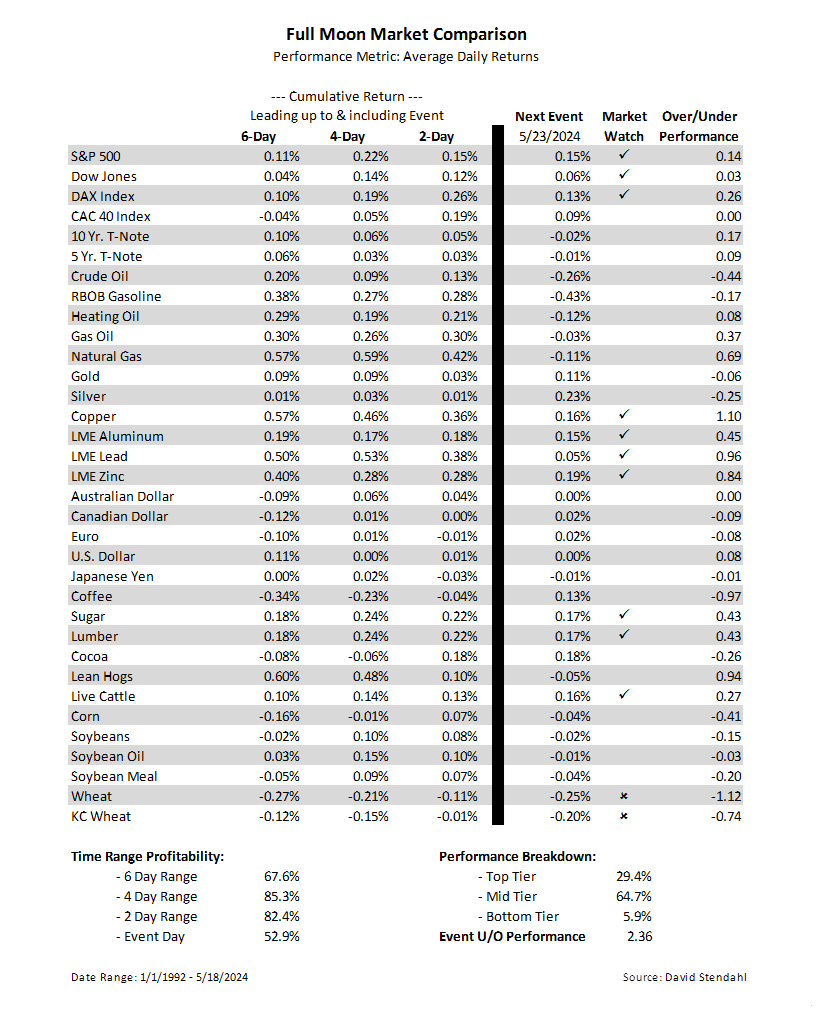Event: Full Moon Phase
A full moon occurs when the sun and the moon are on opposite sides of the Earth. Because the sun is direct across from the moon, the light completely illuminates it, making the moon appear completely full on Earth. This direct Sun-Earth-Moon alignment adds to the gravitational forces that influence tidal bulge on Earth. The net result is higher high tides and lower low tides than normal. Given this increased gravitational pull, some might believe that there is more lunacy around the markets during the full moon.
The question is … Are the markets crazier leading up to a full moon?
Market Comparision
How do the markets perform leading up to and including the full moon phase? The analysis table below breaks down each of the 30+ markets into four separate trading periods. These time frames span 6-days, 4-day, 2-days, and the event day itself. The return performance for each time frame is measured against its normal performance during the year to calculate a final over or underperformance return. This metric quantifies, in percentage points, the advantages or disadvantages associated with the full moon phase. Markets highlighted with a checkmark or an “x” should be closely monitored for potential strength or weakness heading into the event.
DYK: The date for Easter Sunday is calculated based on the Full Moon and the vernal equinox.

Calendar Breakdown by Events
All trading involves risk. Leveraged trading has large potential rewards, but also large potential risk. You must be aware of the risks and be willing to accept them in order to invest in the futures and options markets. Don’t trade with money you can’t afford to lose. This is neither a solicitation nor an offer to Buy/Sell futures or options. No representation is being made that any account will or is likely to achieve profits or losses similar to those discussed. The past performance of any trading system or methodology is not necessarily indicative of future results.
Our strategies have not been developed based on knowledge of or with reference to your particular circumstances, such as financial position, goals, risk-reward preferences, tax situation, brokerage arrangement, investment or trading experience, and so forth. Hence no content or model published here constitutes a recommendation that any particular security, portfolio of securities, transaction, or investment strategy is suitable for any specific person. You alone are solely responsible for determining whether any investment, security or strategy, or any other product or service, is appropriate or suitable for you based on your investment objectives and personal financial situation. More
